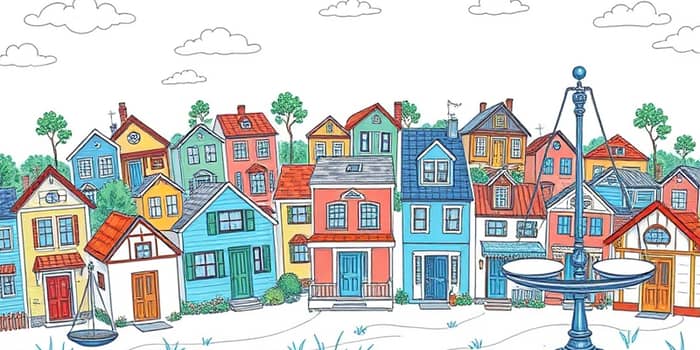
The U.S. housing market is experiencing a notable shift in 2025 as price growth decelerates and supply begins to improve, offering both challenges and opportunities for buyers and sellers alike.
After several years of rapid price increases and fierce competition, the residential real estate sector has entered a phase of moderation. Median home prices are rising more slowly, sales volumes remain subdued, and many potential buyers are evaluating their options more carefully before committing.
In May 2025, the median existing-home sale price hit a record $422,800 for that month, yet this figure represents only a 1.3% year-over-year gain. Sales activity, recorded at a seasonally adjusted annual rate of 4.03 million, marked the lowest May volume since 2009. These figures underscore a market that remains active but far less frenzied than in recent years.
The Federal Reserve’s rate cuts have failed to drive mortgage rates significantly lower. Despite the Fed reducing its policy rate, long-term interest rates remain elevated due to persistent inflation pressures and macroeconomic uncertainty.
By late 2024, the average 30-year fixed mortgage rate dipped to 6.2%, only to rebound above 7% in early 2025. As of June, rates hover between 6.86% and 6.94%. Experts argue that once long-term rates reflect expected monetary policy, further Fed cuts have minimal impact on mortgage pricing.
For prospective buyers, this means borrowing costs remain high, and home affordability challenges persist. Many Americans are delaying purchases or considering alternative strategies such as adjustable-rate mortgages or larger down payments to mitigate future rate risk.
One of the most encouraging developments is the gradual improvement in housing supply. After years of scarcity, inventory levels are climbing, providing more options for buyers.
In May 2025, unsold existing homes reached 1.54 million—a 4.6-month supply. This represents a 6.2% monthly increase and a 20.8% rise from a year earlier. Realtor.com data indicates a 30.6% year-over-year jump in April inventory, marking the 18th straight month of gains.
The new construction sector also shows strength, with 481,000 new homes on the market—the highest level since 2007—and speculative homes for sale at record highs. Nonetheless, total supply remains below historical norms, maintaining upward pressure on prices in many regions.
Affordability is the crux of current market challenges. Elevated home prices combined with high borrowing costs have dampened buyer enthusiasm. According to the Home Purchase Sentiment Index, 74% of consumers consider it a bad time to buy, despite a slight uptick in overall confidence.
Housing costs also contribute significantly to inflation. The shelter component of the Consumer Price Index rose 3.9% year-over-year in May, remaining a leading factor in overall price increases. Industry experts emphasize that addressing shelter costs through new supply is critical to controlling inflation and advancing economic normalization.
As the market cools, both buyers and sellers can adopt strategies to navigate the landscape effectively. Patience and flexibility are key.
By adopting a data-driven approach and staying informed about mortgage trends, participants can make more confident decisions and potentially secure better terms.
Regional disparities persist. Urban markets, where prices soared highest, are seeing some of the most pronounced cooling. In contrast, suburban and rural areas, while also experiencing slower growth, still face tighter inventories relative to demand.
Looking ahead, the interplay of inflation, Fed policy, economic growth, and housing supply will shape market dynamics. Experts at J.P. Morgan forecast subdued price growth of 3% or less for the year, while Bankrate anticipates rates remaining in the mid-6% range.
A cautious optimism emerges that by late 2025, moderating prices and rising inventory could restore some affordability, especially for well-prepared buyers. However, risks such as continued inflationary pressures, geopolitical uncertainty, and construction slowdowns may temper recovery.
After a prolonged period of surging prices and fierce competition, the U.S. housing market is entering a more balanced phase. Moderating growth and improving supply offer a window of opportunity for buyers who plan strategically, while sellers benefit from strong price levels and steady demand.
Ultimately, staying informed, leveraging expert guidance, and maintaining financial flexibility will be essential for anyone looking to buy or sell in this evolving landscape. With patience and preparation, market participants can turn the current cooling trend into a pathway for sustainable, long-term success.
References













